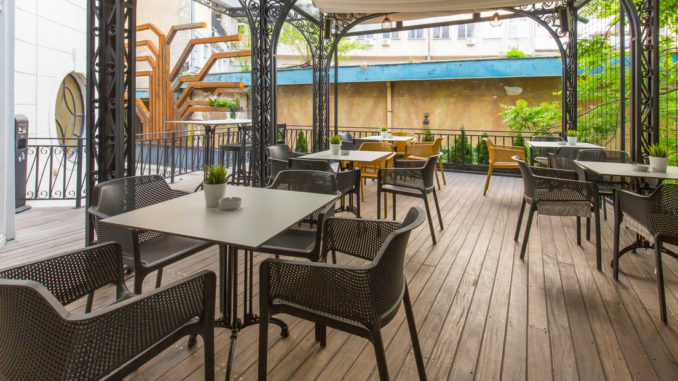
With the remaining retail establishments across the state opening shuttered doors today, approximately 89% of Ohio’s economy is open for business, according to Governor Mike DeWine.
But there is still work to be done.
At his daily news conference last Thursday, the governor also announced when restaurants, bars, salons, barbers and hairstylists would be able to open their doors, but only under conditions that involve following a list of “best practices” for the company or industry involved. This Friday, May 15, will be the opening date for barbers, hairstylists, nail salons and other professionals in related health and beauty industries.
“We asked businessmen, businesswomen and professionals to work with experts in health and representatives from health departments around the state to come up with what are literally the ‘best practices’ as we open up businesses,” says Gov. DeWine. “We are trying to marry science with the practicality of a profession or business.”
The Ohio Restaurant Industry, which has taken perhaps the greatest economic hit from the pandemic, received what could only be good news from the governor’s presser. The governor announced that restaurants and bars would be allowed to open for outside dining this Friday, May 15, while inside dining would be allowed to re-open on May 21.
The announcement was a great first step to re-opening an industry that means so much to our state’s economy. According to statistics from the National Restaurant Association, there are more than 22,547 eating and dining establishments in Ohio, which employ more than 451,300 people. Another 134,000 work in non-restaurant foodservice positions. In 2018, the restaurant industry accounted for $24.2 billion in sales, with restaurant and foodservice jobs accounting for 10% of our state’s economy.
Treva Weaver, COO of N. Wasserstrom and owner of a franchise for Zoup! Eatery, chaired a restaurant business group that included representatives from all sectors of the restaurant industry from virtually every geographic section of the State from rural to major metropolitan areas.
“Rather than focus on a hard-fast percentage like other states have done, our board focused on safety,” said Weaver during her portion of the presentation. “We asked restaurants to create a floor plan that complies with current social distancing guidelines.”
For example, with the current mandate, parties of 10 or less can be seated together, but they must be separated from other parties by at least 6 feet, or by a physical barrier. In fine dining, that barrier might be a high booth back that acts like a wall, or a plexiglass barrier.
“We wanted to give each owner the opportunity to comply with the restraints but still have a unique space,” Weaver added.
Masks will be required for some restaurant workers, but not all due to safety concerns.
“You wouldn’t want someone standing over a hot grille with a mask on, it’s a safety issue,” she said.
Similarly, gloves may be required in some positions, but not all.
As for patrons, they will be asked to comply with a set of safety guidelines as well. Masks may be required, but that determination will be left up to the individual establishment or chain. There will be other guidelines that people must follow as well.
“We all have to work together to do two things: keep everyone safe, but get the economy going,” the governor added. “As Ohioans I know we can do it.”
By Terry Troy
